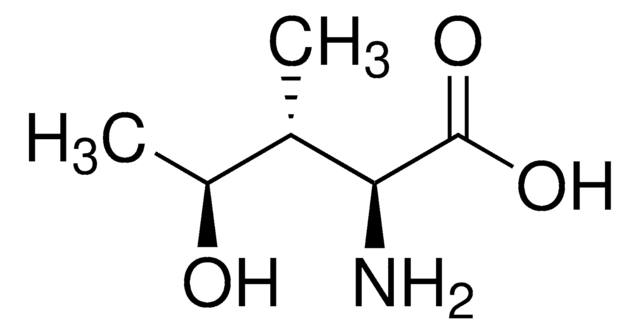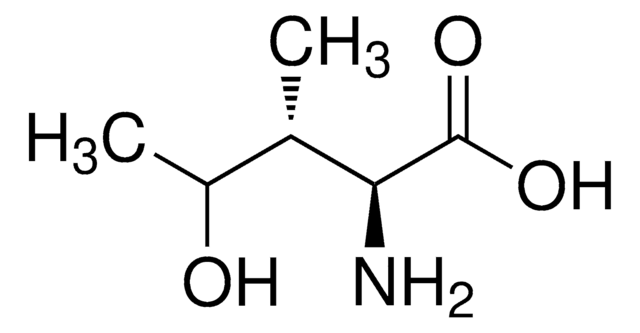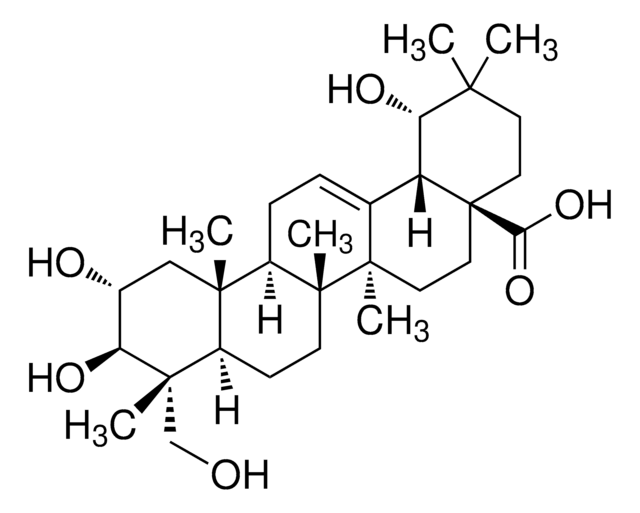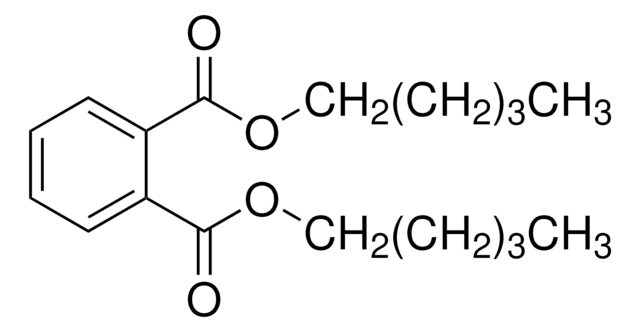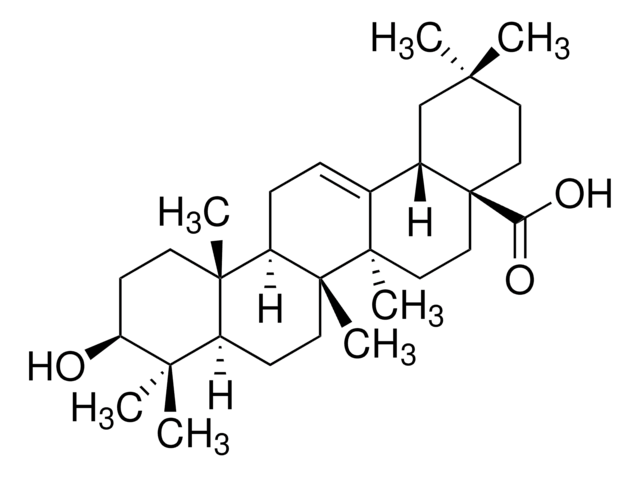49549
4-Hydroxy-L-isoleucine
≥98.0% (TLC)
Sinonimo/i:
(2S,3R)-2-Amino-4-hydroxy-3-methylpentanoic acid
About This Item
Prodotti consigliati
Nome del prodotto
4-Hydroxy-L-isoleucine, ≥98.0% (TLC)
Livello qualitativo
Saggio
≥98.0% (TLC)
Attività ottica
[α]/D +34.0±2.0°, c = 1 in H2O
Colore
white to off-white
Temperatura di conservazione
2-8°C
Stringa SMILE
CC(O)[C@H](C)[C@H](N)C(O)=O
InChI
1S/C6H13NO3/c1-3(4(2)8)5(7)6(9)10/h3-5,8H,7H2,1-2H3,(H,9,10)/t3-,4?,5-/m0/s1
OSCCDBFHNMXNME-DSDZBIDZSA-N
Cerchi prodotti simili? Visita Guida al confronto tra prodotti
Azioni biochim/fisiol
Confezionamento
Avvertenze
Warning
Indicazioni di pericolo
Consigli di prudenza
Classi di pericolo
Eye Irrit. 2 - Skin Irrit. 2 - STOT SE 3
Codice della classe di stoccaggio
11 - Combustible Solids
Classe di pericolosità dell'acqua (WGK)
WGK 3
Punto d’infiammabilità (°F)
296.6 °F
Punto d’infiammabilità (°C)
147 °C
Scegli una delle versioni più recenti:
Possiedi già questo prodotto?
I documenti relativi ai prodotti acquistati recentemente sono disponibili nell’Archivio dei documenti.
Il team dei nostri ricercatori vanta grande esperienza in tutte le aree della ricerca quali Life Science, scienza dei materiali, sintesi chimica, cromatografia, discipline analitiche, ecc..
Contatta l'Assistenza Tecnica.